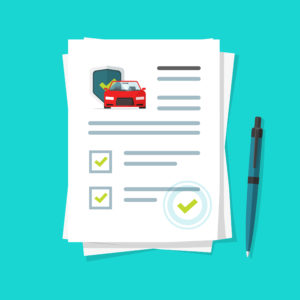 Every auto insurance policy in Nova Scotia includes Section B Benefits, commonly referred to as No-Fault or Accident Benefits. If you are injured in an automobile accident, you may be entitled to recover up to $50,000 in medical expense coverage through Section B Benefits, regardless of who is at fault.
Every auto insurance policy in Nova Scotia includes Section B Benefits, commonly referred to as No-Fault or Accident Benefits. If you are injured in an automobile accident, you may be entitled to recover up to $50,000 in medical expense coverage through Section B Benefits, regardless of who is at fault.
The purpose of Section B benefits is to provide coverage for accident victims to access the required medical treatment needed to recover from their injuries. These accident benefits include coverage for medical expenses, loss of income, housekeeping expenses, funeral expenses, and death benefits.
Who is covered under Section B Benefits?
- The policyholder
- The driver of the insured vehicle
- Any passenger in the insured vehicle
- Pedestrians who are hit by the insured vehicle
- Dependants and family members who were occupants of other vehicles
To expedite the treatment of minor injuries and compensation for property damage caused by automobile collisions, Nova Scotia introduced Section B Automobile Accident Diagnostic and Treatment Protocols for Minor Injuries. Section B Protocols are optional for accident victims diagnosed with a car accident-related minor injury.
What Are Section B Treatment Protocols?
Treatment protocols are intended to streamline the process for car accident victims to access medical treatment for minor injuries. If your injuries are classified as minor, you have the option to seek immediate treatment from a medical practitioner without approval from your insurer. Unlike the traditional route of an insurance company reimbursing your medical expenses, your primary healthcare provider (chiropractor, physiotherapist or medical doctor) can bill your insurance company directly.
What Type of Injuries Can Be Treated Within the Protocols?
Under the Nova Scotia Insurance Act, the legal definition of a minor injury is a “sprain, strain or whiplash-associated disorder”. Under subsection 5(3) and Section 159 of the Insurance Act, the definition of injuries that can be treated within the protocols are as follows:
“Sprain” means an injury to one or more tendons, to one or more ligaments, or to both tendons and ligaments.
“Strain” means an injury to one or more muscles.
“Whiplash-Associated Disorder Injury” means a whiplash-associated disorder other than one that exhibits one or all of the following:
- Neurological signs that are objective, demonstrable, definable and clinically relevant;
- A fracture to the spine or dislocation of the spine.
A whiplash-associated disorder (WAD) is when the force of an automobile collision injures connective tissue or muscles in the neck. There are four levels of WAD injuries, also referred to as grades. WAD grades 1 and 2 are considered minor injuries and covered under treatment protocols. Symptoms include neck stiffness, pain or tenderness, and reduced motion. WAD grades 3 and 4 are more severe and not covered under Section B protocols. They involve signs of neurological decline presented in reduced reflexes or loss of feeling, in addition to any fracture or dislocation of the spine.
How Do I know If My Injuries Fall Within Section B Protocols?
If your injury meets the definition of a minor injury outlined in the Automobile Accident Minor Injury Regulation of the Insurance Act, your injuries will fall within Section B protocols. However, an injury is no longer considered minor if it results in a serious impairment.
According to the regulations under the Insurance Act, a serious impairment must be ongoing since the accident and not expected to improve, resulting in a substantial inability to perform the following:
- The essential tasks of regular employment, occupation or profession, despite reasonable efforts to accommodate the impairment.
- The essential tasks of training or education in a program or course that the injured person was enrolled in or had been accepted for enrollment at the time of the accident, despite reasonable efforts to accommodate the impairment.
- The normal activities of daily living.
A healthcare practitioner must use the criteria outlined in the Insurance Act to diagnose and determine the severity of an injury. Authorized treatment plans are also outlined in the Insurance Act as a way to promote healthier outcomes by providing consistent, quality care for minor injuries.
How Many Treatments Will I Receive if I Choose the Treatment Protocols?
You are entitled to a pre-set number of treatments from your primary healthcare provider or adjunct therapist (massage therapist, acupuncturist or an occupational therapist) if you proceed under Section B protocols. The number of treatments you are entitled to will depend on how severe your injury is.
A 1st or 2nd degree strain or sprain provides up to a combined total of 10 visits, while a 3rd degree strain or sprain allows for a maximum of 21 visits. The same number of visits apply to whiplash injuries grade 1 (10 visits) and grade 2 (21 visits).
Patients with multiple injuries from a single accident are eligible for a combined total of 10 visits to treat two or more injuries diagnosed as 1st or 2nd degree strains or sprains, and a grade 1 whiplash injury. A maximum of 21 visits is available to treat one or more 3rd degree strains or sprains and a grade 2 whiplash injury.
How Long Can I Receive Treatments Under Section B Protocols?
Coverage for treatment under Section B protocols expires in 90 days from the date of the accident. A patient or health care practitioner cannot submit an insurance claim for treatment protocols until the patient has completed the prescribed claim form for the injury. This form must be sent to the insurer no later than 10 business days after the accident.
An insurance provider must respond with a decision within 5 business days of receiving a completed prescribed claim form. The decision must either approve or refuse the claim.
A claim for treatment protocols can only be denied for the following reasons:
- The person who was injured does not meet the definition of “patient”.
- The insurer is not liable to pay due to an exclusion set out in Subsection 3 – Special Provisions, Definitions and Exclusions of this Section of the Section B benefits.
- There is no existing contract that applies to the person who was injured.
- The injury was not caused by an accident involving the use or operation of an automobile.
If an insurer does not send a decision notice back to the applicant within the time limits set out in the Insurance Act, then the claim is considered approved. However, even if an insurer approves a claim for treatment protocols, they may later refuse the claim by sending a written notice to the patient and each person that the patient is authorized to visit for treatment.
What if I Haven’t Recovered After Receiving Treatment Under the Protocols?
Suppose you have completed your pre-set treatments and have not recovered from your injury. In that case, you may be eligible for Section B benefits to cover additional treatments. An injury management consultant must reassess your injuries and provide a referral to explain why further treatments are still medically necessary.
All medical treatments and associated services deemed necessary by the injured person’s physician should be covered under Section B. You can also seek reimbursement for prescription and non-prescription medication used to treat or manage injuries and related pain caused by the car accident.
Medical Expenses Covered by Section B:
- Ambulance services
- Surgical treatment
- Chiropractic treatment
- Dental reconstruction
- Hospital fees
- Psychological counselling
- Physical therapy
- Occupational therapy
- Message therapy
- Medication
- Acupuncture
- Nursing care
- Funeral expenses
- Death benefits
- Medical equipment
If you chose to proceed with treatment protocols, coverage under Section B will only kick in after your initial treatment coverage has been exhausted. Your medical expenses under Section B will be covered up to $50,000 or four years after the accident, whichever comes first. If someone else is responsible for causing the car accident, you can file a claim with their insurance provider to pay for medical expenses beyond the Accidents Benefits coverage in your auto insurance policy.
Contact Valent Legal to Learn More About Section B Coverage Protocols
While Section B protocols are meant to accelerate medical treatment for minor injuries, you need to properly assess the full extent of your losses. If your injuries leave you unable to work or perform daily activities, you should seek legal advice to determine the car insurance personal injury benefits you qualify for.
Our team of car accident lawyers at Valent Legal understands the devastating impact a car accident can have on you and your loved ones.
If you have questions about your claim or believe an insurer has wrongfully denied a claim, contact Valent Legal for a free, no-obligation case evaluation. We will review the circumstances of your accident and injury, and advise you on your legal rights and options to recover the compensation and medical treatment you are legally entitled to.





